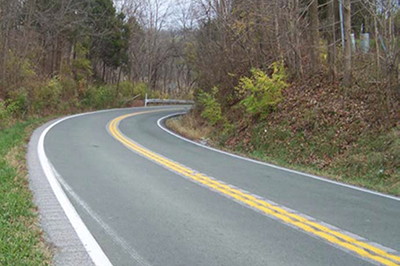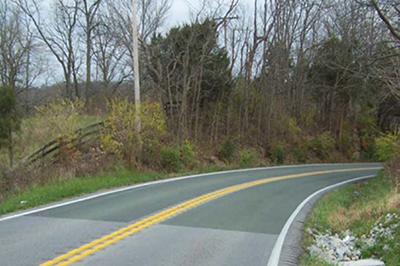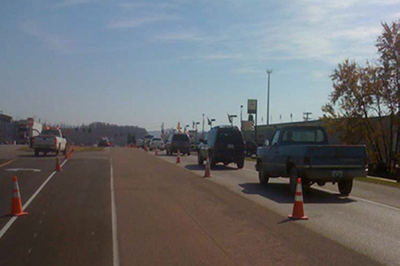Original publication: Every Day Counts Project Case Study: High Friction Surface Treatments – Kentucky Transportation Cabinet (KTC) (PDF, 816kB)
Key Accomplishments
Roadway departure crashes composed nearly 70 percent of the crashes on Kentucky highways. Because these crashes tend to lead to injury or death, the Kentucky Transportation Cabinet (KTC) decided to treat these problem curves as top priority. For any half-mile roadway section having eight or more wet weather crashes over a 5-year period, the KTC proactively applied High Friction Surface Treatment (HFST) using calcined bauxite for the aggregate if the pavement was in good condition.
Results
Oldham County applied HFST in 2009 to treat one horizontal curve. Prior to the HFST, there were 53 wet weather crashes and three dry weather crashes observed over a 3-year period (18.67 average crashes/year). After the treatment, five wet weather crashes and no dry weather crashes were observed over a period of 3.18 years (1.57 crashes per/year).
Knox County installed HFST at one intersection in 2011. The HSFT was installed to address rear-end crashes at the intersection. The friction treatment was only applied on US 25 in the southbound lane, which has a downgrade approach. For a 3-year period prior to the installation, there were six wet weather crashes and 27 dry weather crashes (11 crashes/year). The crashes were mostly rear-end crashes. During the 1.3 years after the installation, there were two wet weather crashes and five dry weather crashes (5.38 crashes/year).


Figures 1 and 2. Oldham County, KY; KY 22, MP4.36 4.44; HFST Installed In August 2009 to Treat One Horizontal Curve


Figures 3 and 4. Knox County, KY; US 25 Southbound Lane, at its Intersection with KY 1629 - HFST Installed In April 2011
Contact
Tracy Lovell
P.E., Transportation Engineer
Kentucky Transportation Cabinet
Tracy.Lovell@ky.gov
Joseph Cheung
P.E., HFST Lead
FHWA Office of Safety
Joseph.Cheung@dot.gov
